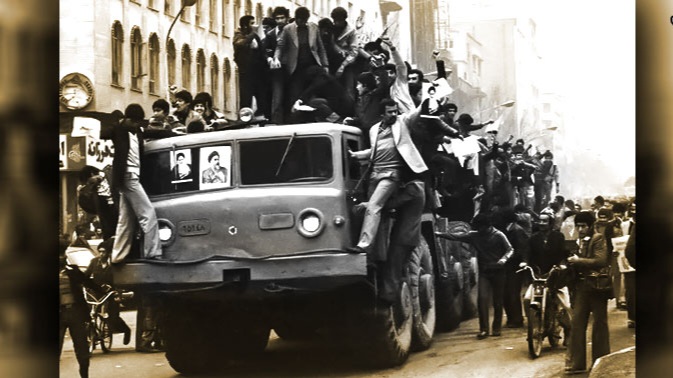Alwaght- History always recognizes the big revolutions with their leaders. Leaders who with their political thoughts, unique charismatic features, and the power to lead a movement not only fundamentally transform their society but also influence the world of their time. Leaders like Vladimir Lenin in Russia, Maximilien Robsepierre in France, Mao Zedong in China, Nelson Mandela in South Africa, Mahatma Gandhi, and Fidel Castro are examples.
Meanwhile, the Iranians, who these days are celebrating their Islamic Revolution, 44 years ago, toppled the pro-Western puppet shah dictatorship with a religious leader and became a reason for substantial changes on the world stage. The trend that started in the 1960s with Imam Rohallah Khomeini’s movement unbelievably succeeded in February 1979 while Mohammad Reza Shah Pahlavi was at his power showoff peak and was enjoying full-scale American support. The movement Imam Khomeini nurtured and led, as Western and Eastern analysts admit, was the determining cornerstone in the course of global developments over the past four decades, to a degree that Iran is now seen as one of the most distinguished actors at the time of the transition to a new world order amid the US and West hegemony downswing.
Always research on the spiritual and anti-arrogance thoughts of the architect of the Islamic Revolution has been in the center of focus of researchers, and this is because the revolution left undeniable effects on the Islamic awakening in a large part of the Muslim world and provided a new rhetoric and a substitutive discourse for settling the problems of the today’s human under the umbrella of religious democracy and revival of the role of the religion in the modern life. Imam Khomeini was one of the world’s history-making figures. According to Udo Steinbach, the director of the German Orient-Institute, “Imam Khomeini is the most political spiritual leader in the world, with an attractive and charismatic personality. All the ideals the Islamic Republic is built on them are rooted in his thoughts.”
Meanwhile his prudent performance, the power to mobilize, and leadership in the 10 days ( 1-11 February, 1979) that concluded the revolution are characteristics barely seen together in a revolutionary leader. Imam Khomeini was a prudent, brave, and thoughtful leader and aware of the time and global issues, leading the modern history’s biggest revolution with novel and innovative methods. In the contemporary history of Iran, some movements took shape but due to the lack of an efficient and capable leader like Imam Khomeini, they did not achieve the desired results.
One of extremely important examples of Imam Khomeini’s role in acceleration of the revolution and its victory was his insistence on returning to Iran despite the risks of this move reminded by people in his orbit. Professor Sadegh Tabatebaee in his memoir wrote that the issue of changing the flight path of the plane carrying the Imam or possibly shooting it down were issues that the military commanders entertained and they even prepared themselves for a large bloody massacre of the people in the event of this happening and an uncontrollable riot. However, Imam Khomeini without any apprehension flew to Iran for the sake of the grand goal he pursued to closely manage the course of developments and lead the revolutionary society in the face of the conspiracies constantly designed by the shah’s last Prime Minister Shapour Bakhtiar and the US embassy in Tehran, dubbed by Iranians the “spy nest, to foil the revolution or deviate it from its main course.
On the other hand, by his presence in Iran and calling Bakhtiar’s government illegitimate, Imam Khomeini injected life and power into the revolutionary movement, so that, firstly, with continuous clarifications about the goals of the revolution, a larger part of the people throughout the country join the street protests, and secondly, cause gaps in the establishment and spur defection of parts political and military forces from the body of the government for its paralysis. Fast-moving developments included his orders to people to defy the curfew, orders to the soldiers to leave the barracks and join the revolution, and meeting with the air force officers and then sending people to help them after they were attacked by the Imperial Guard forces.
Also, Imam Khomeini’s sublime position as a religious authority and leader, which caused a majority of the society to accept him as a leader of the revolution, managed to sturdily unite under an umbrella all of the political factions with various ideologies and tastes. In fact, the extremely high and unattainable popularity and acceptability of Imam Khomeini among all layers of the society caused all parties and factions to unite around him.
Revolutionary institution-making was another issue helping speed up the revolution with the Imam’s presence in the country. After any revolution, chaos is likely, and perhaps shortly after a revolution, many innocent people fall victim and the subverted regime seizes back power in another form. To steer clear of these possibilities, the revolutionary leaders decide to work out a new political system to restore order immediately after the revolution victory. In other words, a full-scale revolutionary has a second stage which is foundation of revolutionary institutions and institutionalization of a new political order. Foundation of revolutionary institutions by Imam Khomeini was heavily influential to the revolution weathering many ups and downs. Examples of revolutionary institutions are the Islamic Revolution Council and interim government, as well as security and military institutions like Islamic Revolution Committees.
Therefore, while the sociologists name two types of leaderships, one organizing (who directs the movement and sets its goals) and the other encouraging (who coordinates and prevents disarray, and gaps), Imam Khomeini had these features together their highest levels, and these features and unique leadership capabilities were among the main factors accelerating the revolution process after Imam’s arrival to the country.



























